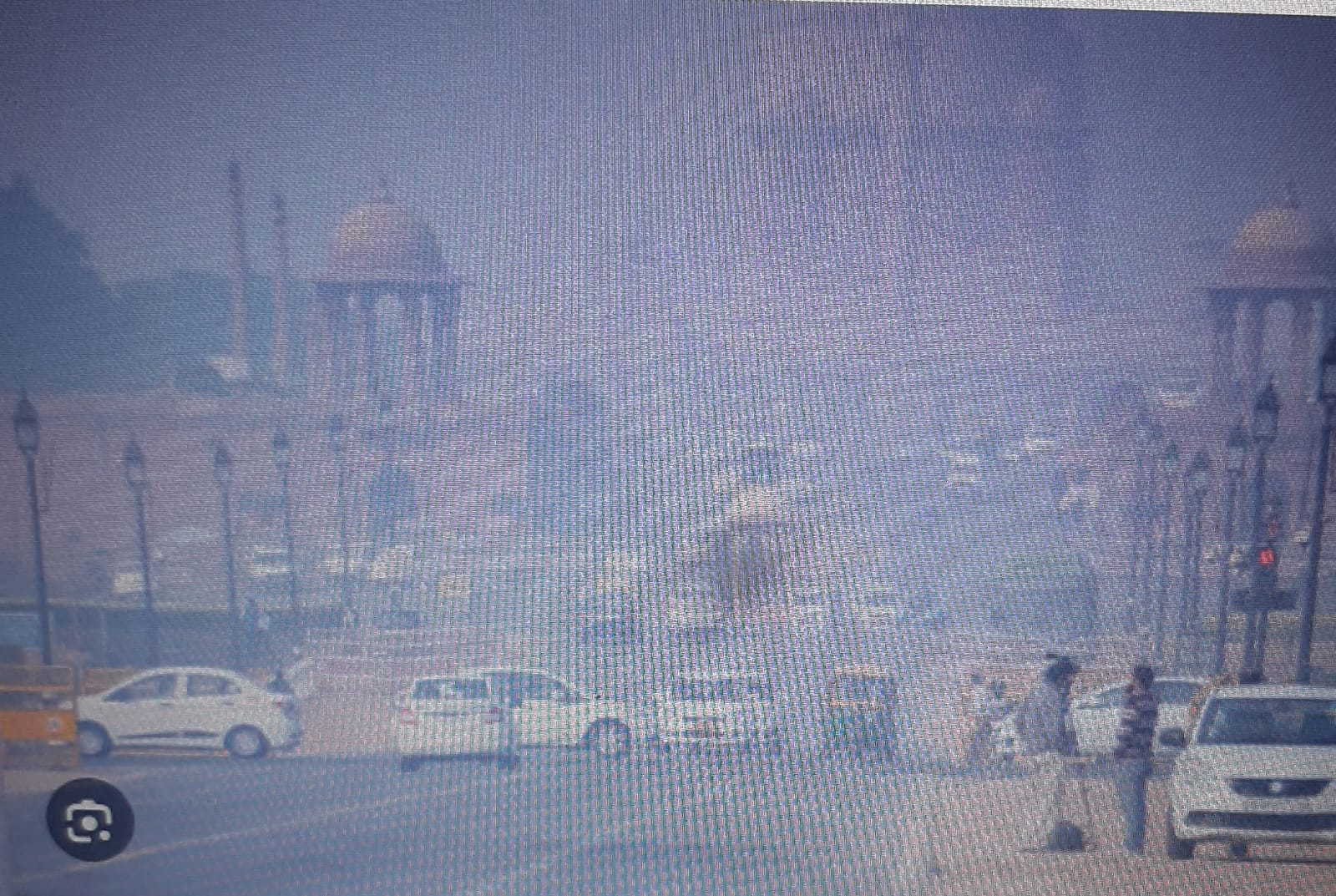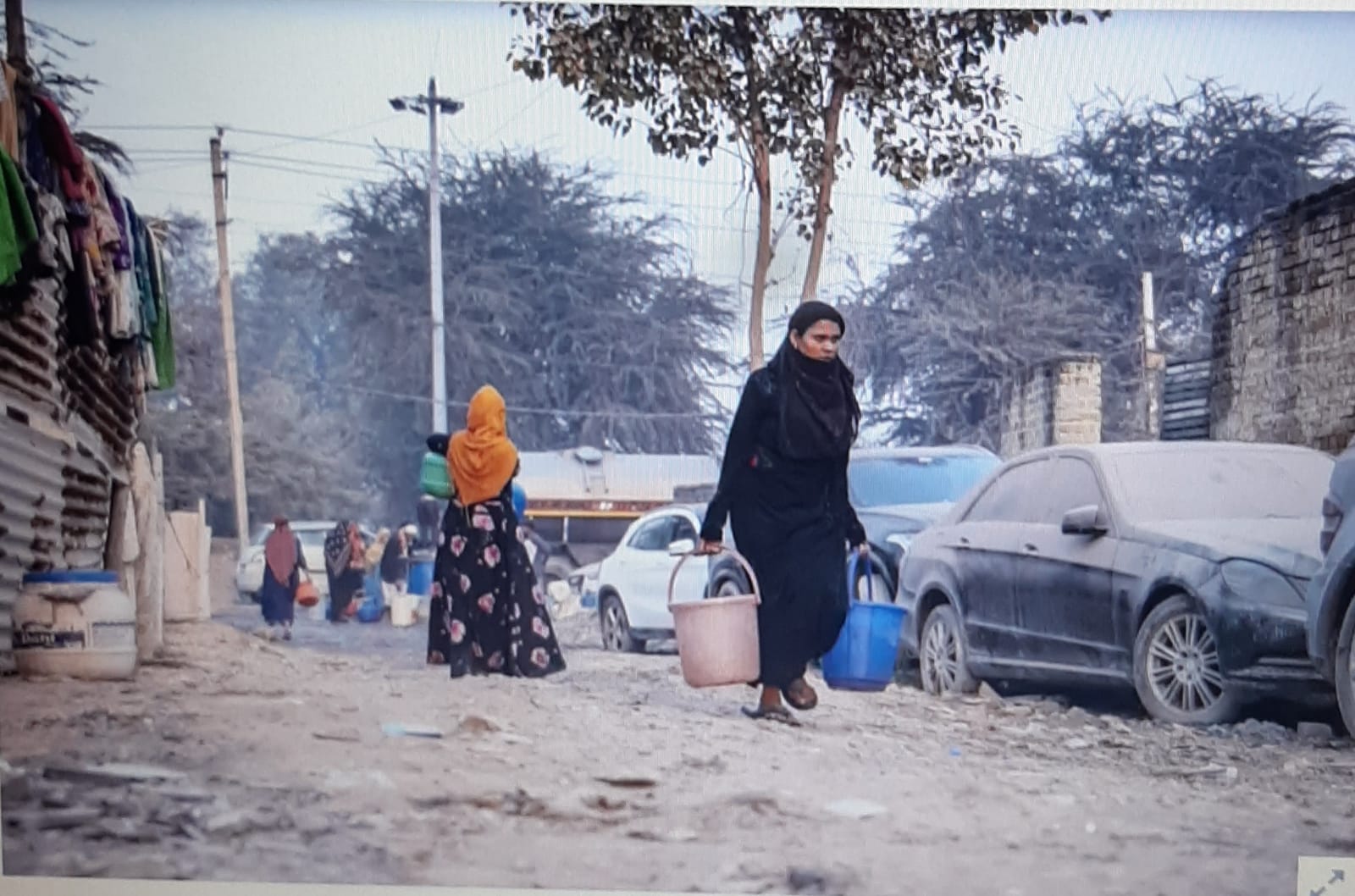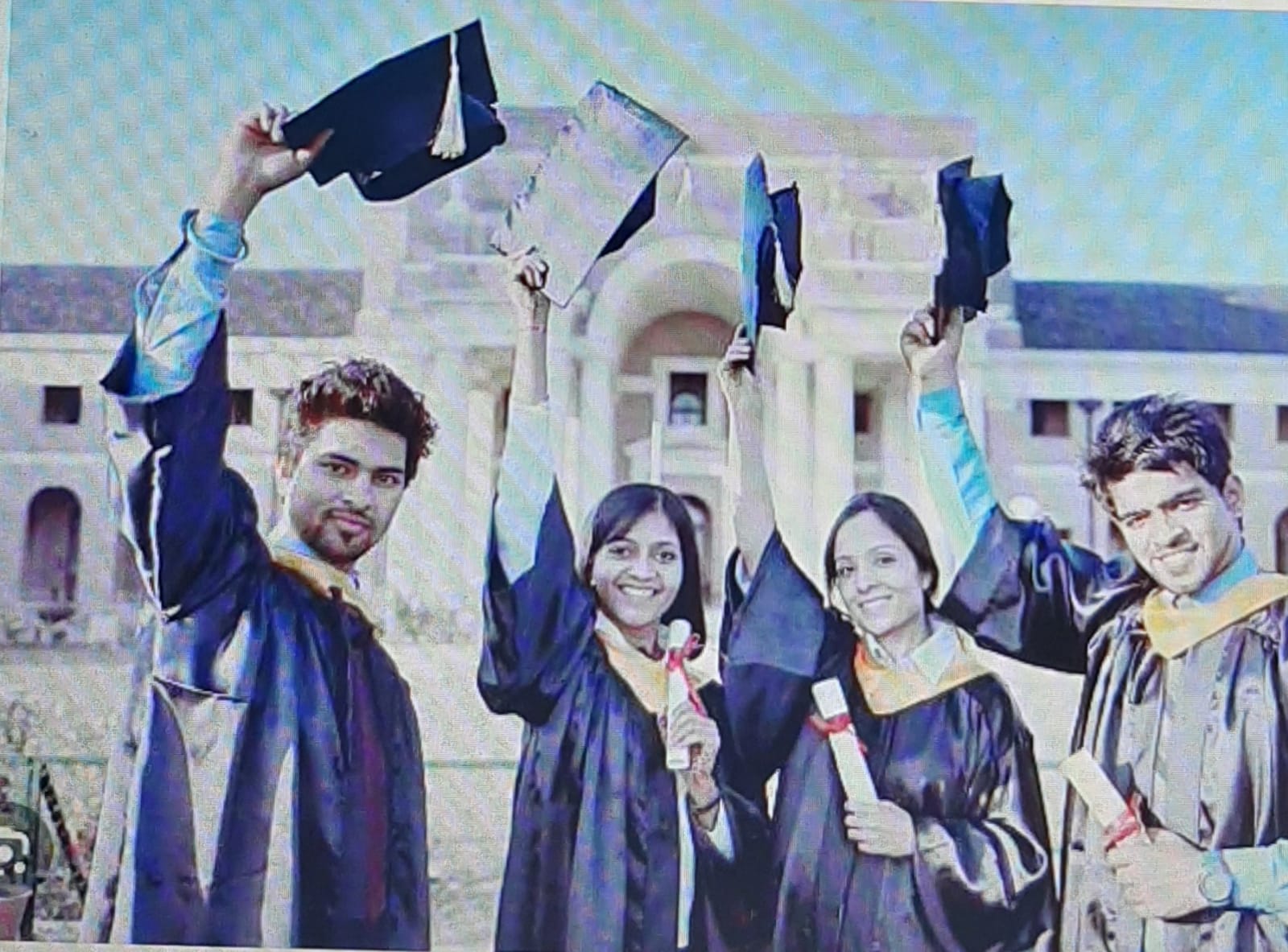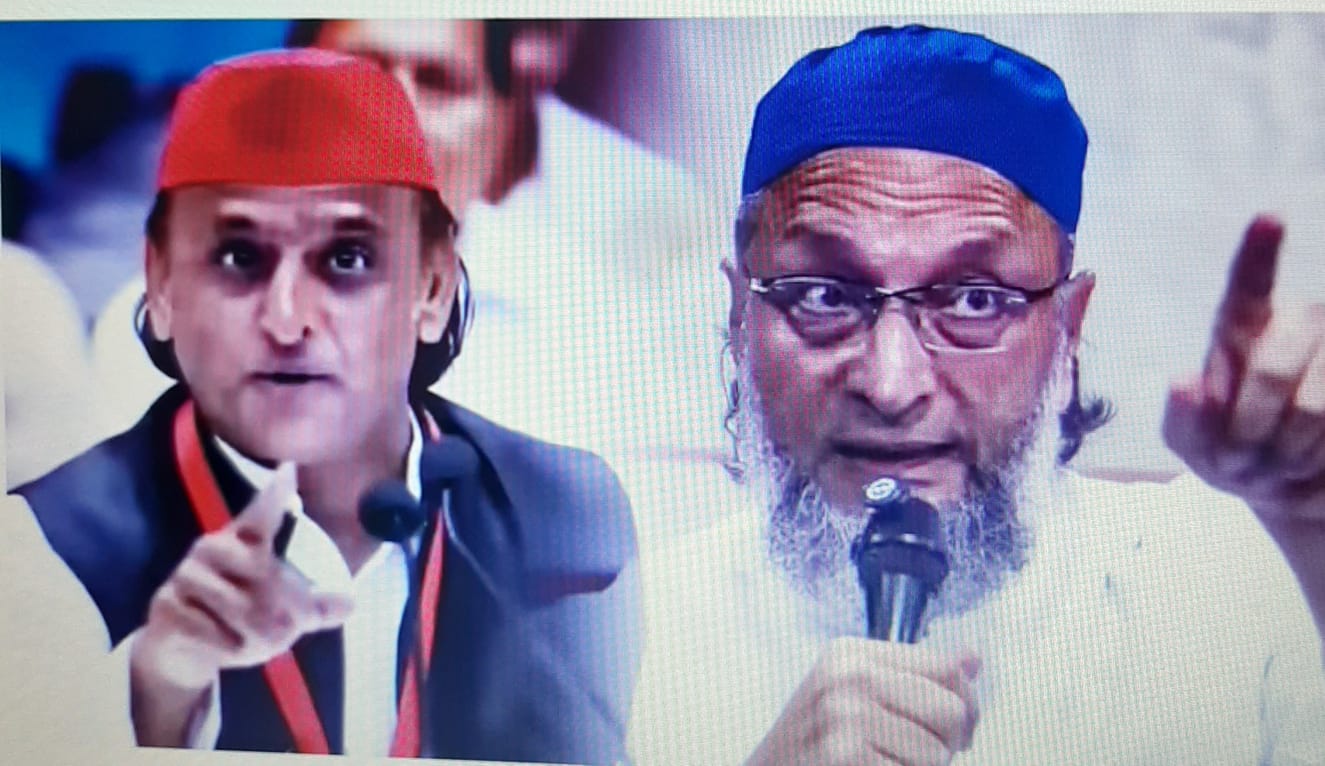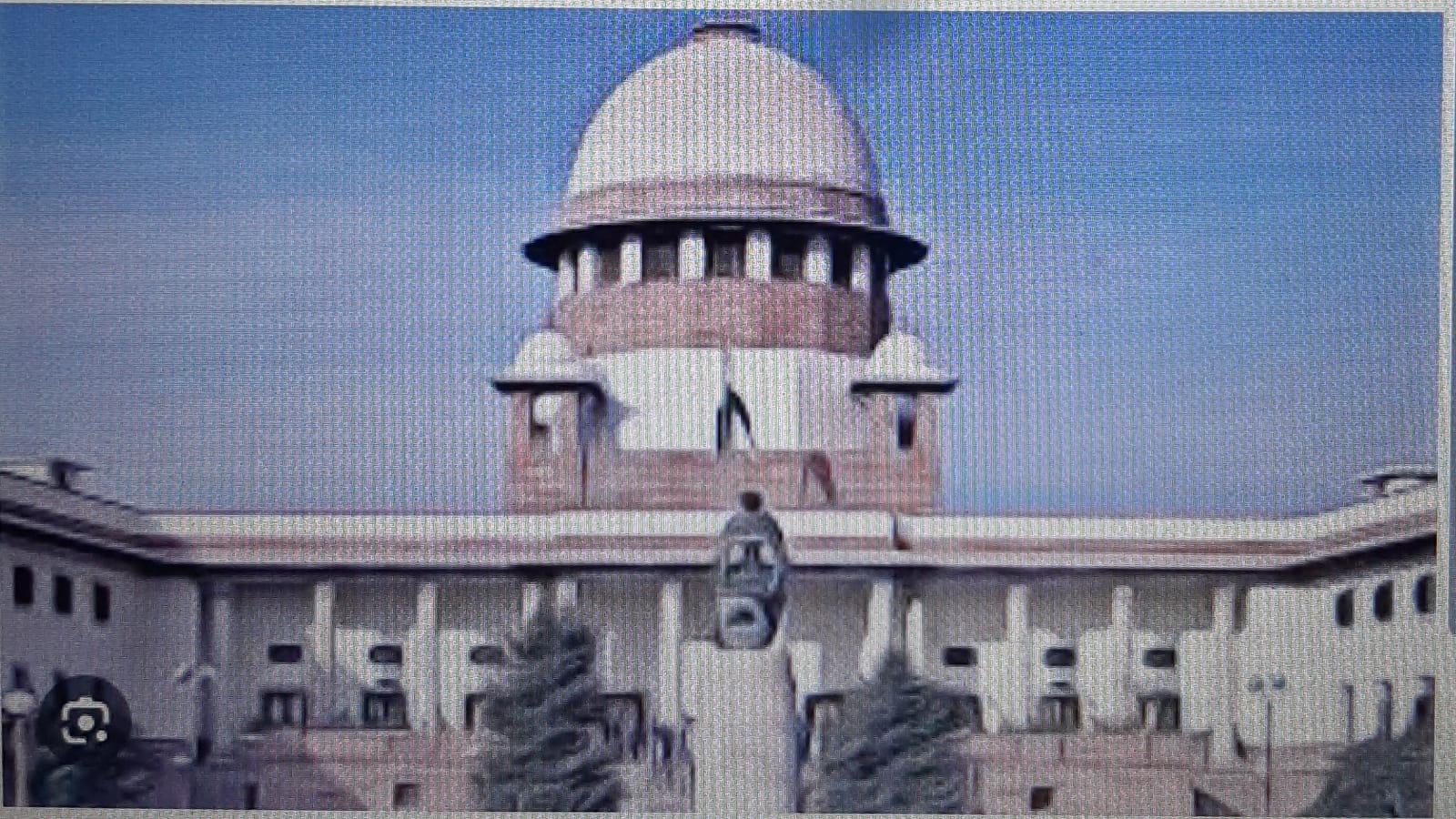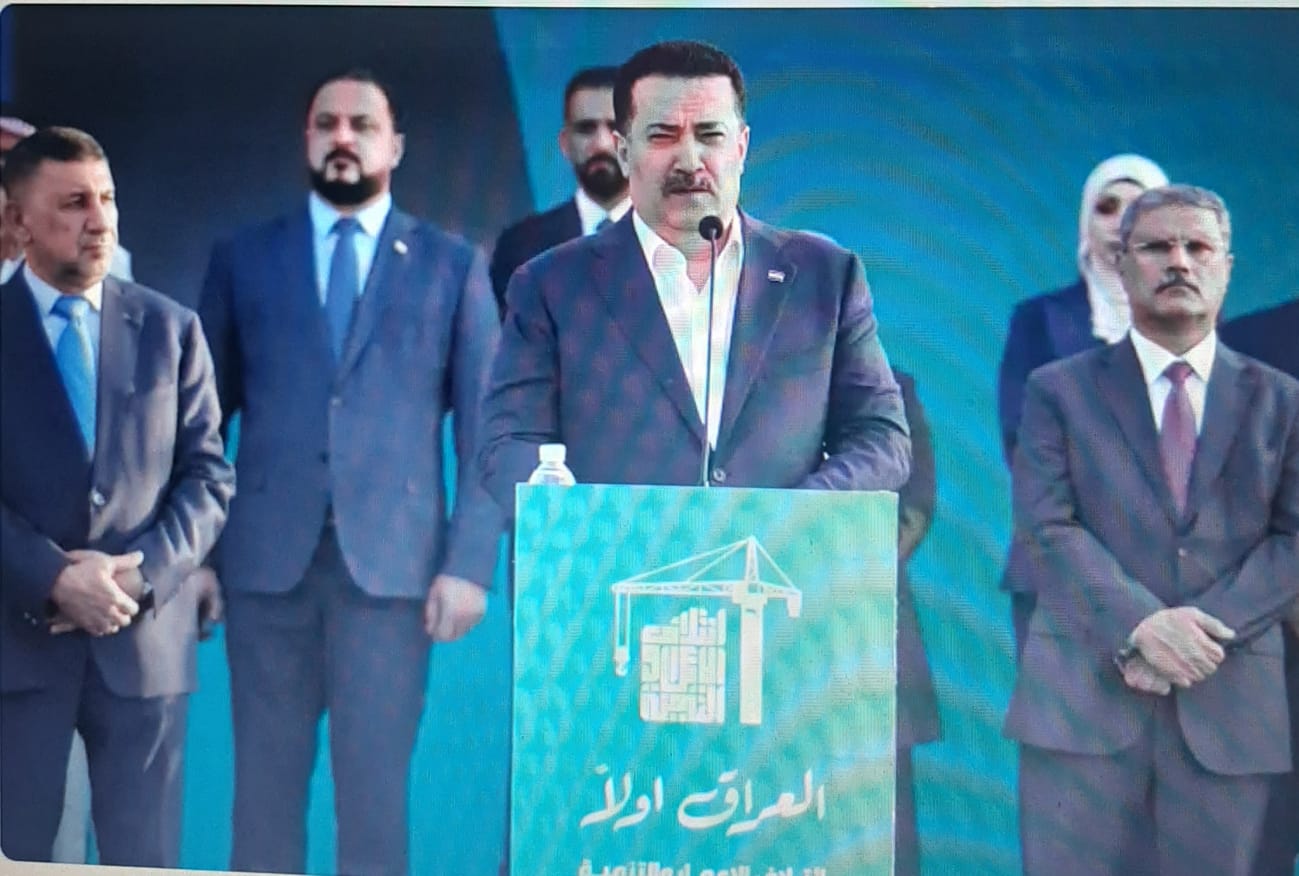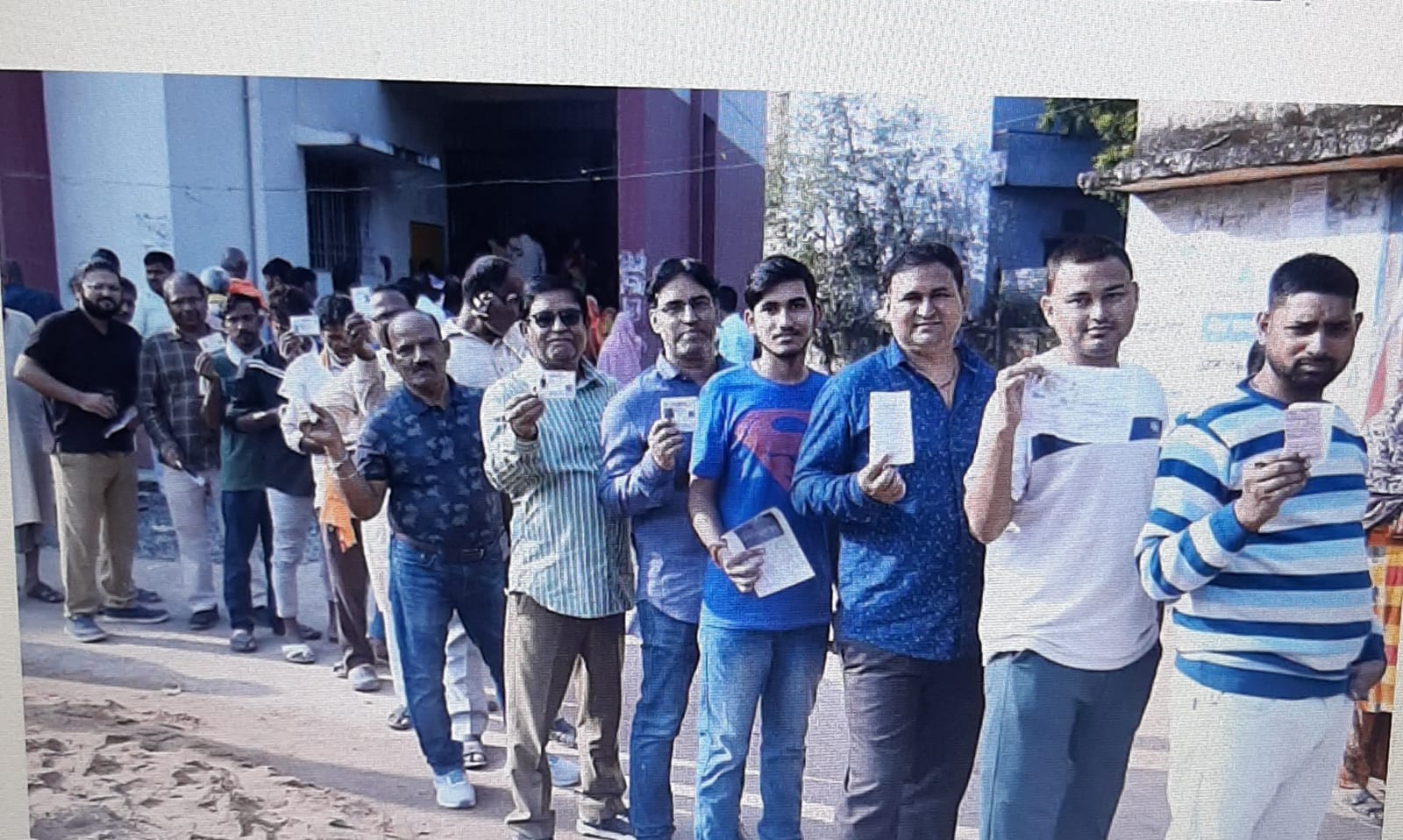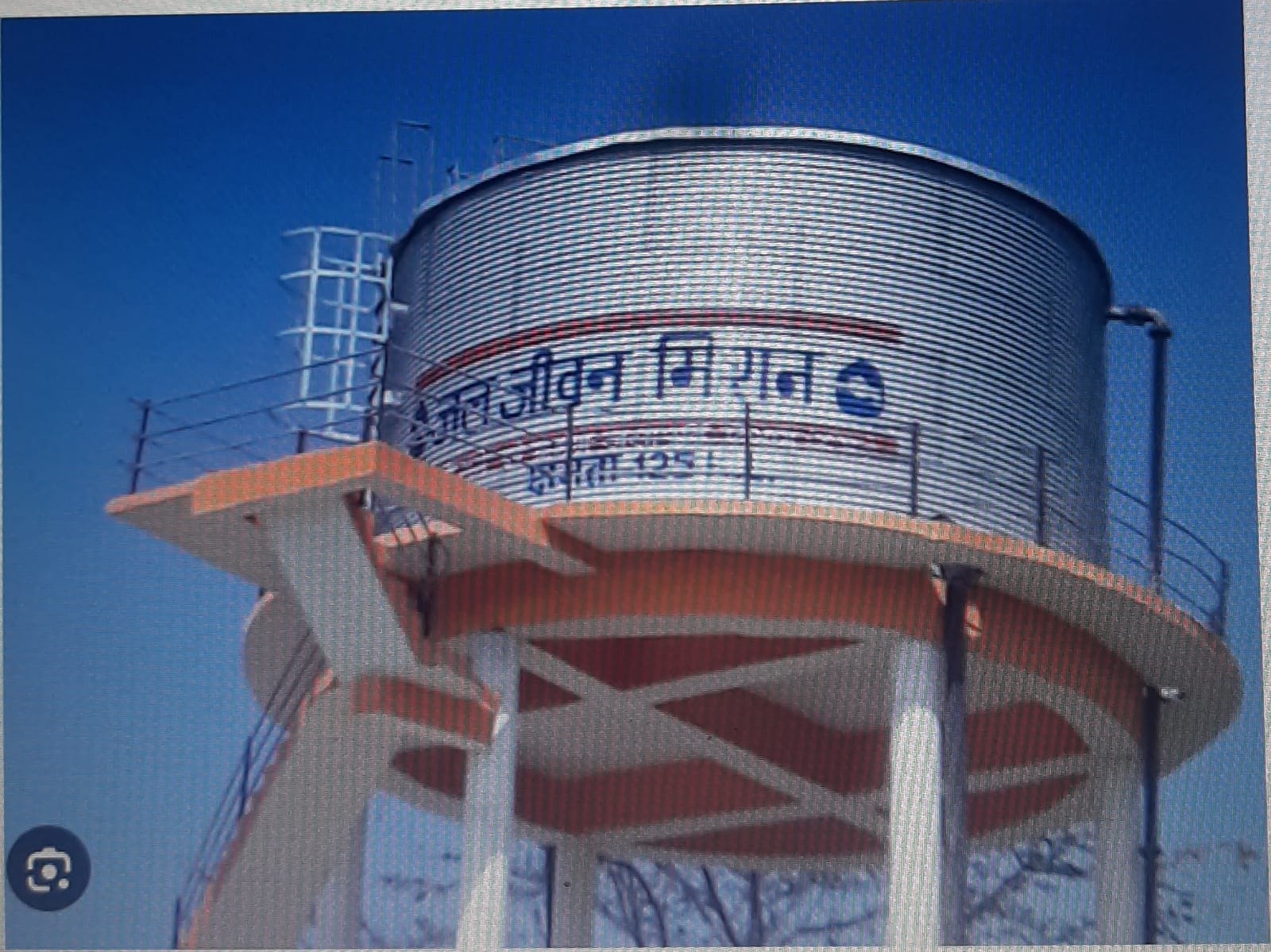
The manner in which JJM is currently being executed is no different from what had been undertaken earlier in different states. By and large, piped water supply schemes had failed then. OH tanks had never been filled up due to poor quality and erratic supply of electricity. With no water flowing in the public standposts, it was only a matter of time before the system went into disuse and disrepair, writes former IAS officer Sunil Kumar
The ambitious Jal Jeevan Mission (JJM) launched by Government of India in 2019 has recently been in the news[i] for all the wrong reasons. It was expected to provide piped drinking water facility to all 19 crore rural households by 2024. It has missed the deadline. The new target is 2028. There has been a stupendous increase in project cost (from Rs.3.6 lakh crore in 2019 to Rs.8.29 lakh crore in 2025) and the average cost of providing water connection per household has reportedly escalated from Rs.30,000 in 2019 to Rs.1.37 lakh now. The Finance Ministry has refused to meet the full cost.
More seriously, the programme has got embroiled in serious allegations of corruption in several States like Rajasthan, Madhya Pradesh, Uttar Pradesh, Maharashtra and Odisha. Consequently, over 100 teams led by senior officers have been constituted by Government of India and they have been sent to 135 selected districts in different States with directions to inspect and report on the implementation of the project. Instructions are to even conduct “on the spot excavation” on any sample stretch of pipeline to check the execution of the project as per approved Detailed Project Report (DPR). States like UP are now scurrying to send their own officers to all 75 districts and getting reports regarding quality of construction and regularity of drinking water supply in the villages among others[ii] before the inspection by central teams.
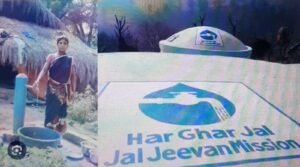
One was reminded of a meeting held in Krishi Bhawan sometime in 2022 where the officials of Department of Drinking Water Supply (DDWS) made a detailed presentation before the Ministry of Rural Development and Panchayati Raj. The impressive dashboard of JJM was presented and use of latest IoT (Internet of Things) technology was highlighted. One MoS asked about status of water supply in his village. The dashboard reflected that piped drinking water was being supplied. The MoS stated that there has been no water supply for last several years. This was followed by stunned silence and a feeble reply that the matter would be looked into.
Another news item published earlier[iii] carried the story as to how Panchayats had failed to operate and maintain the piped drinking water supply schemes in Madhya Pradesh and Public Health Engineering Department (PHED) was planning to hand over Nal Jal Yojana schemes to private sector. A cabinet note was reportedly being prepared. At first glance to a lay reader this proposal would seem innocuous. But in this news item we can detect all that is wrong with public policy formulation in India and why governance continues to be cold shouldered by all stakeholders!
First, let’s examine the message contained in the aforesaid news item. One, Panchayats have failed to operate and maintain the piped water schemes. In Madhya Pradesh, 27,150 single village piped water schemes were proposed at a sanctioned cost of Rs. 17,911 crore. As many as 6500 schemes are reportedly being revised due to cost escalation of about Rs.3200 crore. Cost escalation has become a major issue in 2025 as mentioned earlier.
Till May 26 this year, schemes in 6552 Gram Panchayats (GPs) of MP had been reportedly completed and the process of certification by the Gram Sabha, as per JJM Guidelines, has been completed in 3940 GPs. Drinking Water Supply is one of the 29 subjects listed in the 11th Schedule. These are to be transferred to the Gram Panchayats.
Since DDWS had sought and succeeded in getting 60 percent of the devolution funds (Rs.141,600 crore) ‘tied’ for operation and maintenance (O&M) of JJM and Swacch Bharat Mission (Grameen) projects by the 15th Central Finance Commission (CFC), the scheme Guidelines stipulated transfer of completed schemes to GPs who were made responsible for O&M of these piped water schemes. These included interalia fixing and collecting user charges, paying electricity bills, ensuring regular water supply and maintaining the quality of water.
The unfolding story in MP (and all other States), which is of greater interest to citizens, is not completion of piped drinking water schemes but how their O&M will be carried out by the GPs and whether these schemes would not turn into ‘white elephants’ which GPs are unable to afford and maintain.
In MP, water connection has (upto 26 May, 2025) been given to about 77.99 lakh households (69.80% of the target). Each household is to receive piped drinking water for two hours in the morning and two hours in the evening. The overhead water tanks are supposed to be filled up and water supplied from these to all households. The system is designed to deliver 55 lpcd which is an improvement over 40 lpcd which was the norm earlier. Consumers are expected to pay Rs.60 per month as user charges. The total collection through user charges would come to Rs.561.60 crore per annum (from 78 lakh connections) if there is hundred percent collection. The actual collection is reportedly only Rs.4.68 crore per annum[iv] (1.24 percent) on an average in the past three years. A pilot study[v] of 20 single village schemes carried out in 4 districts of MP in 2024 found that the average water tax collection was 43.2%. These were better performing and more affluent districts.
The PHED officials allege that GPs are not able to ensure daily supply of water and so consumers refuse to pay bills. GPs also do not have the funds and/or resources to maintain these water supply schemes. Accordingly, PHED officials were proposing to make clusters of 100 villages each and then hand over the O&M responsibility to private operators first for a period of three years which could be extended for a further period of two years. The department also intended to seek budgetary support of Rs.1100 crore per annum from Government for running these piped water schemes.
The latest update is that the state government centrally deducted Rs.1100 crore from the share of GPs based on State Finance Commission (SFC) recommendations and transferred it to the Electricity Department as payment of energy dues. No monthly electricity consumption bill for GPs was generated and sent. There was no question of asking for GP wise energy consumption details from the Electricity department or seeking any resolution of the Gram Sabha for making these payments on their behalf. The decision was taken centrally and executed. The situation is more or less the same in almost all States. So much for devolution of State resources to the third tier of Government!
Examination from Public Policy Perspective
Any public policy is formulated keeping in view the public good. JJM was conceptualised as a CSS to ease the drudgery of women in rural areas who primarily ended up ferrying drinking water from the handpump or the public tap located at a distance from their house. By providing two free tap connections in the household premises, the presumption was that this would be welcomed by all residents. Further, it would enable supply of clean and safe drinking water as the quality of water supply could be tested at the point of origin.
Was there any demand for the scheme? Apparently not. It was decided by the Union government and the Prime Minister announced it from the ramparts of the Red Fort during his Independence Day address in 2019. A similar scheme was under implementation in Bihar since 2015 as one of the ‘seven resolutions’ of the State Government led by Nitish Kumar.
Stakeholder consultation was limited to consulting the State departments and informing them about this new CSS. Keeping in view the huge sum committed by the Union government and how much they stood to lose if they did not accede to the scheme, all State governments agreed to implement the scheme.
Design and implementation of the scheme was done centrally by the State PHED and agencies like Jal Nigams despite provision of preparation of Village Action Plan (VAP) by the Gram Panchayats in the JJM Guidelines. The rural local governments had no say in this exercise. This was largely the case in almost all States as states were under pressure from Union Government to initiate work quickly. Departments had little or no interest in involving the rural community fully in preparation of VAP as this would have been a ‘time consuming’ exercise.
Gram Panchayats come into the picture only when they are expected to ‘take over’ the completed schemes. Then the Guidelines stipulate that there would be a meeting of the Gram Sabha. A specific resolution would be passed and videographed which would be uploaded on the JJM dashboard. So the ‘owner’ would be ‘taking over’ a project which it neither officially demanded, had no role in design and execution of the project, was not assured of the ‘quality’ of the work and no knowledge if there was any clause detailing ‘contractor liability’ and, if yes, then how it could be enforced and by whom.
A whole list of responsibilities were being thrust on the GPs. One, to ensure daily supply of water for stipulated period. Two, ensure the quality of drinking water supply. Three, raise the water supply bill for every household and set up bill collection mechanism and ensure collection of water charges. Four, pay the salary of pump operator, plumber, electrician engaged for running the system. Five, ensure timely payment of electricity charges. Six, ensure source sustainability. Seven, bear the cost of regular O&M of the system. Eight, put in place an effective grievance redressal mechanism.
How was this to be achieved? GPs were to ensure this by collecting user charges from the consumers,using the ‘tied’ component of 15th CFC grants, SFC grants to the extent possible and their own resources. It may be noted that 15th CFC Guidelines do not permit use of grants for payment of electricity bills, functionaries’ salaries and borewell construction. Most of SFC grants are never released to the GPs and get adjusted at the State level for payment to Electricity department or to Water and Sewerage Boards in most States.
The Study by Samarthan & WHH referred to earlier highlighted that the average actual O&M expenditure in a single village water supply scheme was around Rs.2.17 lakh and electricity charges alone amounted to about Rs.1 lakh while the model O&M budget underestimated the expenditure at Rs.1.66 lakh per annum. It provides only Rs.60,000 for payment of electricity dues which is a gross underestimate. Further the gap between average collection of user charges and O&M expenditure was to the tune of Rs.1.05 lakh per annum in the 20 selected villages.
It must also be remembered that the water rates are not fixed by the Gram Sabha. Rather it is decided by the State government. Thus, if there is a revenue deficit, it ought to be filled in by the Government. Further to expect 100 percent collection of water charges is unrealistic given the present day culture of government writing off past dues and providing everything free. GPs are also hemmed in by the guidelines issued by union and state governments regarding use of devolution funds.
Providing clean and safe drinking water is the basic function of local government. However, it must be suitably equipped and supported by the department which is not the case in most States.
On the contrary, it seems (from the MP example) that the PHED officials are waiting like a vulture to virtually feast on the carcass: waiting for formal declaration of the failure of GPs to operate and maintain piped water supply schemes and then takeover their O&M. What we are witnessing in state after state is the disinclination of political and bureaucratic class to let go of their hold on water and sewerage projects.
Thus, the manner in which JJM is currently being executed is no different from what had been undertaken earlier in different states. By and large, piped water supply schemes had failed then. OH tanks had never been filled up due to poor quality and erratic supply of electricity. With no water flowing in the public standposts, it was only a matter of time before the system went into disuse and disrepair. India Mark II handpumps proved to be the saviour in rural areas. Schemes like Swajaldhara (where the local community and the GPs had greater say in the design, implementation and O&M of schemes) found few takers among the State Governments as it’s budget was not attractive enough for the politicians, bureaucrats, engineers or contractors. JJM has been designed as a mega project but so far few lessons seem to have been learnt from past failures. This puts a serious question mark around the sustainability of the scheme.
Way Forward
Even at this late stage, both union and state governments would need to realize that centralized design, implementation and O&M of piped water works will not really work all over the country. Mere lip service to the local governments in the scheme guidelines do not work on the ground. Success of any scheme calls for active coordination and cooperation of several departments and agencies which largely seems to be missing at this stage. Mere transfer of these projects to GPs after completion of capital works will not succeed unless the following measures are undertaken.
First and foremost, ensure a clean and transparent handing over of the JJM schemes to the Gram Sabha. If the GP has doubts regarding the quality of work, they must be satisfactorily removed. Any effort to forcibly complete this exercise by using the coercive power of the State over Sarpanches would likely spell the death knell of the scheme.
Two, Water supply and Sanitation Service-level Benchmarks and Model Contracts[vi] prepared and circulated by the Ministry of Panchayati Raj and UNICEF to all States in August 2023 must be widely disseminated to Panchayats and explained in the meetings of Gram Sabha. Only when there is full user satisfaction, will the users be ready to pay for drinking water.
Three, the Gram Sabha should be given a free hand in fixing the user charges keeping in view the paying capacity of individual households. This would require detailed briefing of not only the Sarpanch and Ward members but also explaining the nuances to all participants in the Gram Sabha by officials of PHED/ Jal Nigam. The Gram Sabha could give subsidy to eligible households from its own source of revenues. Likewise, it should be allowed to provide incentives to consumers who pay the water bill in advance and to the Water tax collecting agency so that they have a stake in the success of the programme. If local SHGs are involved in water tax collection, they immediately become a stakeholder. Likewise, skilled personnel such as pump operators, plumbers and electricians also become a stakeholder if they begin to earn from the project.
Four, State Government departments must stop looking at GPs as implementing agencies. Barring GPs located in distant and remote areas, the way forward for GPs to undertake the operation and maintenance of these water supply schemes is to engage competent and credible service providers and enter into legally binding service contracts with them. The agencies get paid for the quality of service provided. Model contracts developed for various types of services relating to water supply and sanitation have been included in the MoPR publication referred to above. The GP becomes responsible for ensuring supply of drinking water to citizens as per service-level benchmarks by the service provider and does not get into the difficult task of doing the work itself. PHED officials should work together with the GPs to ensure that the selected service providers meet the technical qualification criteria and their financial bid is as per extant guidelines issued by the Finance department in the State.
Five, the PHED / Jal Nigam must ensure that agencies with adequate tools (HDPE Pipe Jointing Machine) and trained staff to undertake specialised work such as fixing broken HDPE pipelines, major motor and pump repairs are available at Block levels.
Six, there is urgent need to undertake a massive skill development programme for plumbers, electricians, water pump repair mechanics and technicians skilled in laying and repairing broken HDPE pipelines to meet the skill gap. Skill certification of existing plumbers, electricians, pump repair mechanics and their mandatory employment by GPs and the service providers would open up new service sector jobs in rural areas.
Seven, Union and State Governments would need to initially provide at least 50 percent of the O&M budget to the GPs to meet essential expenditure relating to minor repairs and/or payment of salary of functionaries. This could be progressively reduced over a five year period as local governments become more efficient in collection of user charges and managing the pipewater system.
Eight, services of lawyers trained in civil matters (especially related to contract management) must become available to the GPs. A lead could be taken by the District Panchayat in this regard. It could prepare and finalize the panel of lawyers and fee chargeable by them for various types of services rendered to GPs. This would eventually make the GP more professional.
Nine, make provision for villagers to set up own overhead tanks (1000 litre capacity or so) and bear the cost of filling it up so as to meet their aspiration of assured 24×7 supply of drinking water. It may be indicated that water meters should be installed in these households and after a certain volume, they would be charged extra by the GP based on their actual consumption.
Ten, senior officers of PHED/ Jal Nigam must be placed under the control and supervision of the District Panchayat. It would be their job to assist the GP in ensuring enforcement of legally binding contracts entered into with service providers. They begin to act as technical and financial consultants to GPs. So the role of the PHED changes from that of a competitor to a facilitator.
Eleven, GPs must be encouraged to use part of their resources to set up a ‘sinking fund’ which could be used to undertake major repairs / replacement of pumps in due course. The tendency to come up with a new CSS after every few years should be discouraged.
Twelve, source sustainability works would require adoption of watershed management approach. This could extend over two or more GPs. This work should ideally be undertaken by the Block Panchayats with role of each GP clearly delineated in the DPR.
These call for strong public commitment of union and state governments to hand over charge of drinking water supply schemes to local governments as stipulated in the constitution. The role of PHED would need to be redefined. District and sub-district level officials of this department would need to be placed under the control and supervision of District Panchayats. Role and function of parastatals like Jal Nigam in UP and Uttarakhand and Water & Sewerage Boards in other States would also need to be drastically reduced and eventually brought under the control of local governments. Role of competent private companies in undertaking O&M of water works in urban and rural areas would increasingly become important. Effective contract management between local governments and private service providers is critical for efficient functioning of water works where consumers receive drinking water of potable quality in their taps. Service-level benchmarks should be known to consumers, service providers and agencies alike. These measures taken at this stage of JJM implementation may go a long way in ensuring the sustainability of the ambitious scheme.
(Sunil Kumar is a member of Pune International Centre and a former civil servant. Views expressed are personal.)
[i] Centre to send 100 teams for ground inspection of Jal Jeevan Mission schemes; The Economic Times, May 20, 2025; https://economictimes.indiatimes.com/news/india/centre-to-send-100-teams-for-ground-inspection-of-jal-jeevan-mission-schemes/articleshow/121289142.cms?from=mdr ; JJM cost overruns: Nodal officer teams to check records, conduct on-spot excavations – The Indian Express, May 24, 2025; https://indianexpress.com/article/india/jjm-cost-overruns-nodal-officer-teams-to-check-records-conduct-on-spot-excavations-10025250/
[ii] Before Central teams hit ground, states scramble to verify Jal Jeevan works: The Indian Express, 26th May, 2025, New Delhi, Late City edition
[iii] ‘Panchayats have failed and Public Health Engineering Department now plans to hand over Nal Jal Yojana schemes to private sector; Dainik Bhaskar, 15th November, 2024, Bhopal edition
[iv] Ibid
[v] Policy Brief on the Operation & Maintenance of Single Village Pipe water supply through Jal Jeevan Mission- Samarthan & WHH, 2025
[vi] Water Supply and Sanitation – Service-level Benchmarks And Model Contracts for Gram Panchayats; Document developed by Ministry of Panchayati Raj with support from UNICEF, August, 2023.


